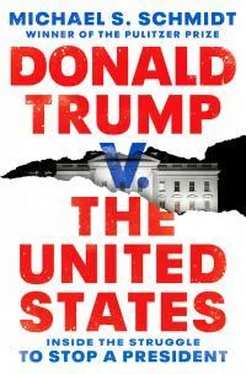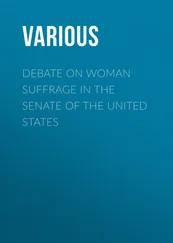And now, as I sat in FBI headquarters, watching a stricken director and trying to understand the nuances of federal gun laws, I could see something remarkable unfolding before me. The bureau had spent two decades and tens of millions of dollars developing computer systems and training personnel to prevent guns from getting into the hands of murderers. Those efforts had failed monumentally and tragically, and here was the FBI director admitting to the country that it was his agency that had let it happen.
“We are all sick this happened,” Comey said. “We wish we could turn back time. From this vantage point, everything seems obvious.”
The FBI makes roughly twenty thousand arrests a year, a significant portion of which result in convictions and prison sentences and receive no public attention. But mistakes in cases can leave a lasting stain on the bureau. In the early 1990s, following lengthy standoffs at Ruby Ridge in northern Idaho and Waco, Texas—during which a combined eighty-nine people were killed—the bureau was heavily criticized by the public and its actions were eventually investigated by government officials. After 9/11, government investigators placed significant blame on the FBI for failing to effectively utilize well-placed informants and for neglecting to share intelligence with other agencies that could have thwarted the attacks.
While it was very unusual for the director to make any pronouncement about an ongoing investigation, much less offer a heartbreaking mea culpa, Comey calculated that keeping the details about Roof’s gun sale secret could lead to similar negative consequences for himself and for the bureau. Unlike many of his predecessors, Comey believed in getting bad news out early and explaining it thoroughly. Transparency was the greatest disinfectant. Congress and the media became most agitated, and curious, when an official played “hide the ball,” seeking to withhold information from the public. If you leveled with them, Comey believed, those charged with oversight typically moved on to another target to scrutinize.
This approach had been hugely beneficial to Comey in his career. In 2004, shortly after he became deputy attorney general under President George W. Bush, he confronted the case of an accused terrorist named Jose Padilla who had been arrested on suspicions that he was plotting a “dirty bomb” attack on American soil. Although he was an American citizen and had been arrested in the United States, Padilla had been treated as an enemy combatant, and the Department of Justice had been holding him under extreme conditions in a military facility for two years, despite having not charged him with a crime. The Padilla case raised all sorts of questions about how long the government can detain an American citizen without affording him his constitutional rights to due process and a speedy trial.
In June 2004, Comey decided to air out those questions, holding a press conference to lay out the facts of the Padilla case. It worked. Questions about the prisoner’s detention leveled off in the weeks that followed.
Now, in the case of Dylann Roof, Comey was running the same play. Would it work again?
I rushed out of the briefing and back home, where I quickly pounded out a story that the Times posted online. The following day, the Times ran the story on the front page under the headline “Background Check Missed Charleston Suspect.” There was plenty of reason to be critical of the bureau’s grave error, and virtually no media outlet passed on the opportunity to assign blame for the mistakes that had proven catastrophic. But because Comey admitted to the FBI’s failure, it was only a one-day story. There would be no high-profile congressional hearings or investigations.
In my decade as a reporter for the Times, I had seen my fair share of savvy operators navigate media scrutiny, whether it was Yankees manager Joe Torre or the generals and colonels I had dealt with when in Iraq to cover the last year of the American occupation. But Comey had done something far more extraordinary than bring the media along to his point of view. He had resolved a serious political problem without resorting to classic moves in the Washington PR game—shifting blame, calling names, or diverting attention. Instead, he had simply traded on his reputation for principle and relied on exposing the facts to sunlight. Comey had tamed the political winds of Washington at a time when, unbeknownst to even its shrewdest players and observers, the rules of engagement were beginning to shift.
Comey could not have realized it at the time, but that moment would be the last high point of his professional career. From that point forward, a man who had appeared infallible, with an uncanny ability to steer through political storms, would face the greatest professional test of his life, which would humble him in ways that he could never have imagined as he commanded this impromptu press briefing.
On that same day, July 10, 2015, the seeds of his future and the colossal challenge he would face were being planted just down the hall from him. And it wasn’t just Jim Comey’s fate that was sealed that day; in a very real sense, the future of the country changed course that day as well. In the FBI’s counterintelligence division, which protects the United States against espionage and also leads the bureau’s investigations into the mishandling of national security secrets, agents and their supervisors initiated a classified FD-1057; that is, they began a highly sensitive investigation.
Title: Opening of Full Investigation on a Sensitive Investigative Matter (SIM)
Synopsis: FBIHQ, Counterespionage Section, is opening a full investigation based on specific articulated facts provided by an 811 referral from the Inspector General of the Intelligence Community, dated July 6, 2015 regarding the potential compromise of classified information.
This investigation is also designated a Sensitive Investigative Matter (SIM) due to a connection to a current public official, political appointee or candidate.
With this short and cryptic communication, the FBI had opened a criminal investigation into whether the leading Democratic candidate for president, Hillary Clinton, had mishandled classified information during her tenure as secretary of state through her use of a private email account. The investigation would be code-named Midyear Exam.
Hillary Clinton was a singular figure in American politics who just one month earlier had announced her campaign for the presidency. A partisan lightning rod, she was a longtime foil for conservatives, dating back to her husband Bill Clinton’s first national campaign in 1992, and ever since then Republicans had made it a mission to demonize Clinton, routinely accusing her of corruption. Those attacks, going back decades, had only hardened the view of Democrats that relentless investigations of Clinton were baseless and purely political.
Comey’s deputy director, Mark Giuliano, briefed him on the decision.
“You know you are totally screwed, right?” Giuliano said to Comey, suggesting that regardless of what the investigation revealed, half the country would be enraged.
Dating back to his days as a prosecutor, Comey knew the Clintons well enough to have a realistic view of them. In his view, they were neither the cartoon villains the Republicans made them out to be nor the innocent victims of right-wing conspiracies the Democrats would have you believe. But because those were the only two characterizations on offer in the political culture, Comey also knew that his deputy was right: The alternate realities from which Republicans and Democrats regarded the Clintons meant that no matter how the investigation ended, he and the FBI would come out damaged.
“Yup,” Comey said. “Nobody gets out alive.”
Читать дальше












